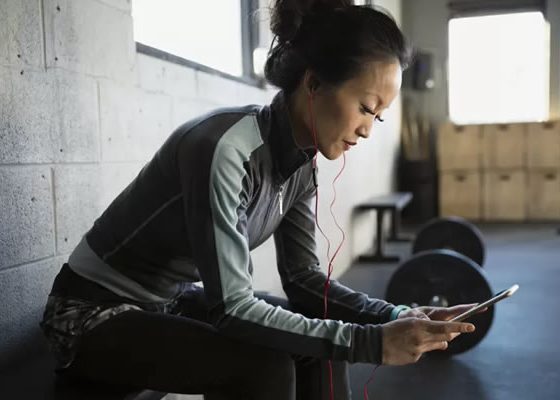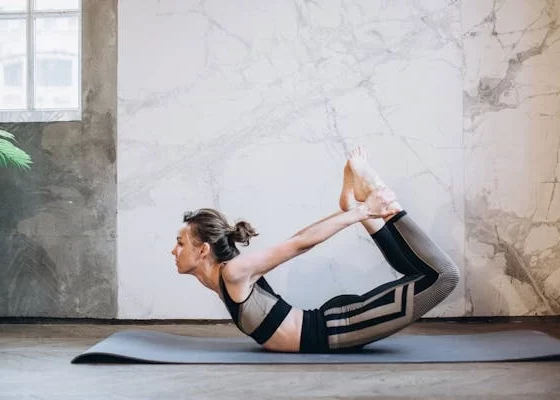Biking is a cardiovascular activity, so the primary muscle it works is the heart. A variety of muscles are at work when you cycle. It is a great exercise to burn calories, shed fat, and tone and strengthen muscles all over your body, but if you’re looking to get huge muscles, you should look to strength training for those results.
Lower Body Muscles
Obviously, biking works your legs, but the muscles in the body are all connected. It is nearly impossible to isolate just one muscle. In fact, that is one of the benefits of this great exercise. Here are three specific muscle groups you will be toning with a cycling regimen.
Calf Muscles
Cycling works the two main muscles in the calf.
- Gastrocnemius – This is the muscle most prominent on your calf. It attaches at the back of the knee and is responsible for helping to lift your heel, which allows you to walk, climb a flight of stairs, and, of course, to ride a bike.
- Soleus – Also responsible for helping to lift the heel, the soleus is not quite as visible, but just as important. When you bend your knee during exercises like cycling, you are using the soleus muscle.
Thigh Muscles
The thigh is made up of more than a dozen muscles and tendons, working together to power you through a biking workout. Here are two of the major muscle groups exercisers generally aim to tone and tighten.
- Quadriceps – The quads are actually a muscle group, which include four major muscles on the front of the thigh: vastus lateralis (outer thigh), rectus femoris (middle thigh), vastus medialis (inner thigh) and vastus intermedius (between the inner and outer thigh muscles). In most people, even those who are not physically fit, the quads are the strongest of all the muscles in the body. The quads attach to the kneecap. They are often worked heavily during a hard session of cycling, so it is fairly common to feel tightness in this area after a good workout. The quads are recruited during the “push” portion of a pedal.
- Hamstrings – Another important thigh muscle group, the hamstrings sit behind and above the knee and attach to the femur bone, as well. These muscles allow the knee to bend as you pump the pedals of a bike. The hamstrings are recruited during the “pull” portion of a pedal.
Balanced Strengthening
Because both the quads and the hamstrings work as a cohesive unit, it is crucial that you strength train both muscles, rather than focusing on just one. Many professional athletes run into injury issues because they have over-trained their quads in comparison to their hamstrings.
Gluteal Muscles
The gluteals are more commonly known as the buttocks. Though the gluteus maximus is the most well known of buttocks muscles, it is only one of three muscles in the gluteal group.
- Gluteus Maximus – With its fleshy, round shape, the gluteus maximus is the most prominent of the gluteal muscles. It has earned various nicknames over time. In fact, a number of exercises and classes have even been created to target this single muscle. Biking, however, is also an excellent way to tone this unique and very strong muscle.
- Gluteus Medius and Gluteus Minimus – The two remaining muscles of the gluteal group, the gluteus medius and minimus muscles, work in conjunction with the hips to rotate the thighs when a body is in motion. Obviously, the ability to rotate the thighs is especially important when running, climbing, or cycling.
Abs and Core Muscles
Cycling requires balance, and any time balance is needed, the core muscles are recruited. Especially in indoor cycling when participants are encouraged to stay upright and not lean into the handlebars, the core is hard at work.
- Rectus Abdominus – Your abs must work to help keep you in the correct position for cycling. They also help with giving your lower body the strength to pedal.
- Latissimus Dorsi – These muscles in your back help with balance and also provide assistance to your arms as they hold the handlebars.
- Erector Spinae – This muscle group in your back helps with stabilization on the bike.
- Hip Flexors – Biking involves a great deal of hip flexion, requiring the hip flexors to work.
Indoor vs. Outdoor Biking
Outdoor biking requires more balance and stability than a stationary bike. The less support provided by the bike, the more your muscles have to work. Here are some examples:
- Cycling on rough terrain requires more stabilization and thus more muscle recruitment.
- Indoor cycle classes like Spin don’t require as much stabilization, yet they can still be quite challenging to the muscles depending on the routine. Riders may be able to tackle steeper resistance on an indoor cycle than they would outdoors because the risk of falling over is greatly diminished.
- Indoor bikes designed for comfort will not challenge the muscles as much as an outdoor bike or indoor cycling classes. Stationary bikes can be made more challenging on the muscles with increased resistance, but the stabilization necessary isn’t comparable.
Appropriate Muscle Recruitment
There is a safe way to hold your body while biking – if you tense up your shoulders and neck you may recruit additional muscles, but you will also likely encounter an injury. Muscles like the trapezius of the neck should remain relaxed to avoid strain while biking. Focus on your cardiovascular performance as your endurance increases to strengthen your heart.



